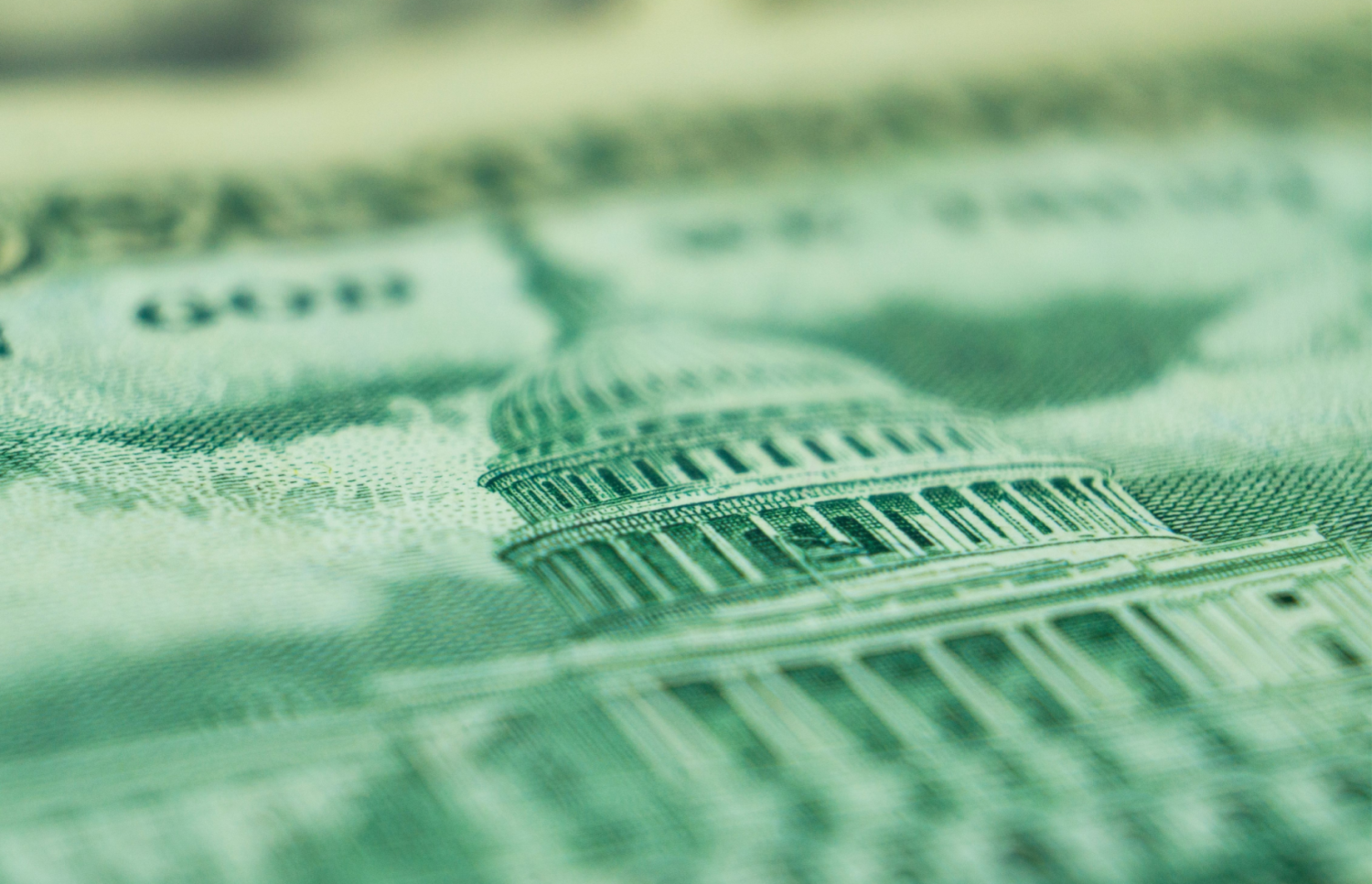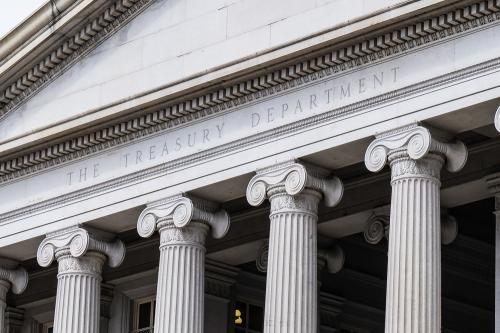This research was discussed at an event on February 12, 2025. You can watch the stream here, and read a summary of this research here.
Introduction
Warnings that the rising U.S. federal debt will lead to economic catastrophe are heard with increasing frequency. Former Office of Management and Budget Director Mitch Daniels, for example, recently wrote: “With debts already about to surpass the nation’s entire GDP … only a dwindling number of denialists doubt that a cataclysmic reckoning … lies ahead,” (Daniels 2024). In this paper, we examine the various channels through which debt can affect the economy to assess the risk that elevated debt will lead to a crisis.
We begin with a summary of the fiscal challenges facing the United States. We then review the costs of debt from a standard macroeconomic model and outline the scenarios that could lead to a crisis. Our analysis suggests the most likely consequences of the projected debt accumulation are those described by the standard macroeconomic model: Higher debt reduces the size of the capital stock and national wealth, benefiting current generations at the expense of future generations. While these costs are meaningful, even more dire (but still realistic) debt projections suggest that federal borrowing is unlikely to spark a fiscal crisis in the next few decades. Instead, increases in federal debt will manifest as a slow and steady erosion of our capital stock and national wealth that will ultimately impair living standards.
Political and economic circumstances can increase the risk of a fiscal crisis. We define a fiscal crisis as a sudden, large, and persistent downturn in demand for Treasury securities relative to supply that triggers a sharp and persistent spike in interest rates. Such a rise in interest rates on Treasuries would most likely precipitate a crisis in the global financial system. As discussed below, the conditions we explore could lead to a spike in interest rates that would be temporary if policymakers—including both the Federal Reserve and Congress—take effective action in response; as a result, in those circumstances fiscal and financial crises stemming from sharply and persistently higher interest rates could be avoided.
A fiscal crisis could be set off by a number of developments. We see four main sources of risk, not all of which are necessarily linked to the level and trajectory of the debt.
- Demand or supply of Treasuries could abruptly shift for reasons unrelated to inflation or default risk such that interest rates spike, causing financial market disruptions that the Federal Reserve is unable or unwilling to mitigate.
- Investors could come to believe that the U.S. Treasury might default on interest or principal payments because of political brinkmanship, and policymakers would be unable or unwilling to regain credibility.
- The Federal Reserve could be perceived as abandoning its mandate to preserve price stability and instead allowing for hyperinflation.
- The long-term fiscal outlook could deteriorate so significantly and so sharply that investors abruptly worry about some form of default, leading them to abandon Treasuries until policymakers take actions to rein in deficits.
In most of these scenarios, it is likely within policymakers’ power to avoid a crisis altogether, even given the projected increase in federal borrowing. In other words, a fiscal crisis is more likely to result from political missteps. These missteps include threats to default or efforts to undermine credibility of the Federal Reserve as well as enactment of policies that sharply increase deficits and thus raise the specter of strategic default.
We recognize there is great uncertainty about the repercussions of debt as a share of GDP rising to levels far exceeding historical precedents, and an analysis benchmarked to historical relationships in the macroeconomy may understate the risks of a fiscal crisis. That said, our analysis suggests that, so long as the U.S. maintains its strong institutions and a fiscal trajectory that isn’t vastly worse than the one currently projected, the chance of a severe and enduring fiscal crisis over the next few decades from debt accumulation appears quite low.
-
Acknowledgements and disclosures
The authors thank Lew Alexander, Ben Bernanke, Greg Duffee, Doug Elmendorf, Jason Furman, Joe Gagnon, Bill Gale, Marc Goldwein, Greg Mankiw, Gian Maria Milesi-Ferretti, Brian Sack, Torsten Slok, Michael Strain, Annette Vissing-Jorgensen, David Wessel, and Danny Yagan for helpful comments, and Liam Marshall for outstanding research assistance. All errors or omissions are our own.
The Brookings Institution is committed to quality, independence, and impact.
We are supported by a diverse array of funders. In line with our values and policies, each Brookings publication represents the sole views of its author(s).






